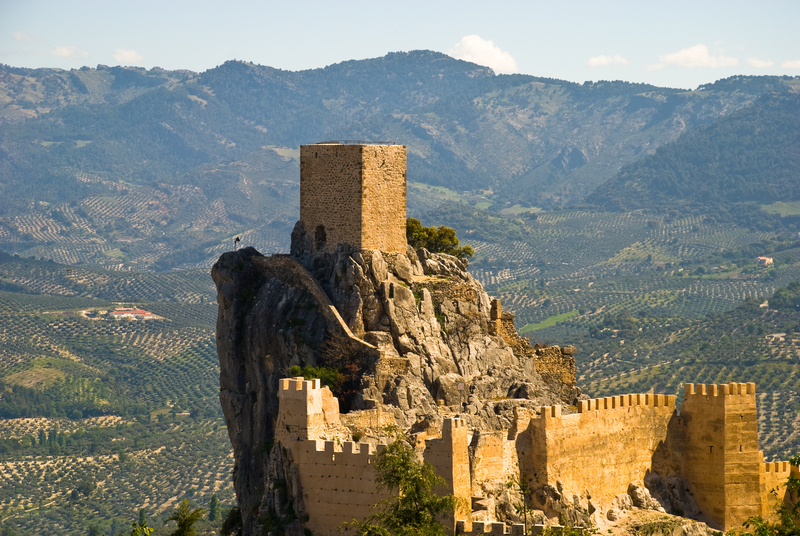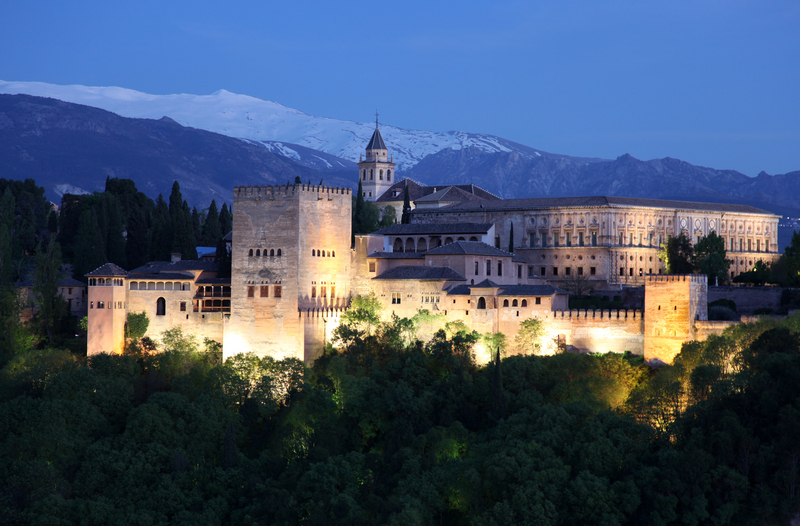Andalusia is one of Spain’s autonomous communities located in the southern portion of the country. Andalusia is an excellent vacation destination for anyone regardless of their areas of interest. This region has a rich history, including a long period where there was a large Muslim population in this region. As a result, Andalusia is home to some of the most extraordinary architecture in all of Spain, including historic mosques and cathedrals. Andalusia is also the place to go for those interested in learning about flamenco culture in Spain.
Andalusia is composed of eight provinces, including Granada, Cordoba, Sevilla, Malaga, Cadiz, and others. Because Andalusia is in the southern part of the country, there are many options for beach visits. The best time to visit Andalusia is in the spring and early summer between April and July and again in the fall in September and October. These months provide optimal temperatures for traveling throughout the region without being too hot or too cold.
 One of the main attractions in Andalusia is the Alhambra in Granada. This is the site of an old Moorish fortress. Although the site was originally used for military purposes, it has become an icon of Moorish occupation in Granada for hundreds of years. Today, the Alhambra is one of UNESCO’s World Heritage sites, attracting tourists from all over the world.
One of the main attractions in Andalusia is the Alhambra in Granada. This is the site of an old Moorish fortress. Although the site was originally used for military purposes, it has become an icon of Moorish occupation in Granada for hundreds of years. Today, the Alhambra is one of UNESCO’s World Heritage sites, attracting tourists from all over the world.
Many visitors to Andalusia also come to see the famous flamenco music and dance of this region. Flamenco comes in several different forms, and locals will tell you that there is a “true flamenco” behind all of the tourist shows. The search for this “true flamenco,” a seductive dance to rhythmic music, occupies people of all ages in Andalusia.
Andalusia is also home to a number of beautiful cathedrals, many of which have been built on top of old mosques. The Great Mosque of Cordoba, for instance, dates back to the 8th century, when its construction began under the Umayyad Caliphate. The mosque was probably built on top of an even older Visigoth site. The mosque is an elaborate work of art and architecture. Historically, this mosque served as one of the most important sites for Muslims in Cordoba as a site of prayer. During the Reconquest, in which King Ferdinand and Queen Isabella expelled the Moors and Jews from Spain, the Great Mosque was converted into a Catholic church. Today, the site is another UNESCO World Heritage Site and it attracts thousands of visitors each year. There are still debates in Spain today about who has the right to worship in the Great Mosque because of its complicated history.
Andalusia remains the second most popular region for tourism in Spain. The rich culture and intricate history brings people from all over the world to explore this great region. Traveling in Andalusia is a great way to learn about Spanish history and the Arab influence that still has an impact on life in Spain today.






